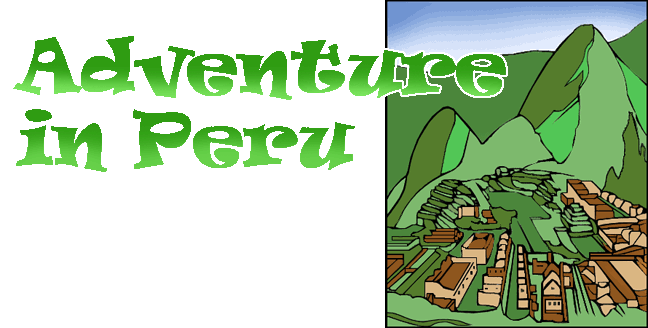Adventure in Peru
(a long time ago)
After Pizarro and his Spanish fighters
defeated the Incas at Cusco in 1536 (a little before my time), the
defeated warriors fled to the jungle. The Spanish followed them,
fighting a stubborn remnant of Incas for the next forty years. For
centuries historians believed that a small band of Incas established a
mountain kingdom not far from Cusco after their unsuccessful effort to
overthrow Pizzaro. The Spanish never found it.
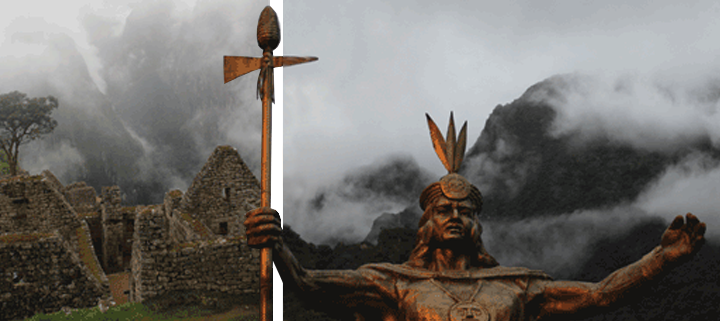
The city remained lost and forgotten for three and a half centuries until it was "discovered" in 1911 by Hiram Bingham. Actually, the site was found four years earlier by two Indian farmers. Bingham was guided to several of the buildings by an Indian named Melchor Arteaga who did not know the value of this find. Not only did Bingham get all the credit for finding one of the great archeological treasures in the world, the professor only paid the farmer who guided him about a dollar.
The city was built on a narrow saddle in the mountains with terraces going right to the edge of the cliffs. The town was a maze of plazas, chambers, and palaces connected by stairways cut out of rock. Bingham named the city Machu Picchu after the larger of the two mountains on both sides of the city. However, if you've ever seen a photo of Machu Picchu, it's the other mountain that makes it into the picture. Machu Picchu means "Mother Mountain" in Quechua. The mountain you see in all the photos is Huayna Picchu, which means "Young Mountain".
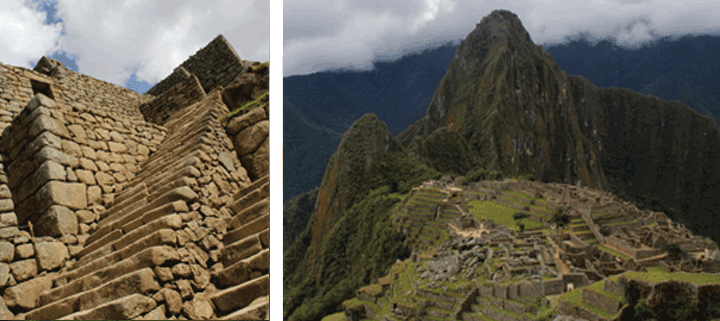
The three-hour train ride followed the river and eventually stopped at a hairpin turn. From the river level, you couldn't see any hint of the fortress above. The Incas planned it that way for protection from the Spanish. But, on a plateau 3,000 feet above the river was the fortress city of Machu Picchu. Here the Incas built homes, temples, and intricate terracing for farming. In all, about 1,000 Incas lived there until the last Inca ruler died in 1571. After that, for unknown reasons, the city was abandoned.
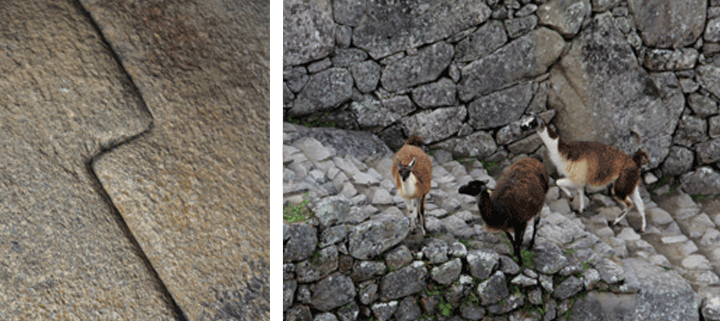
There was a winding road with bus service to take travelers up to the mountain top ruins. There was just one problem. When we arrived at the bus station, we learned the drivers were on strike for one hour. I heard a group of guys suggest that instead of waiting for an hour, we could climb up. It too would take an hour. I was up for it. How many people can say that they climbed up to the Lost City? What I didn't know at the time was that this was a group of guys who were mountain climbers. Machu Picchu was just a practice run for them before going to Bolivia and "real" mountain climbing. They practically ran up the mountain.
They ran. I didn't. I couldn't. I kept climbing and climbing and it didn't feel like I made any progress. Eventually, I arrived at the top -- and ahead of some of the bus riders. I was really tired but really pleased with myself. If my breath was not already taken away, the view would have done it.

There was a path to the top of Huayna Picchu and I was determined to climb that mountain -- even if it killed me -- which it nearly did. My nap helped, but the high altitude took a toll on me.

a view
from the top
Everyone I saw said, "Take your
time." I did. By the time I got halfway up, I rested after
every fifteen steps. Later it was after every ten steps.
Only pride and stubborn determination kept me going. I did make
it. On the top rock on the peak of Huayna Picchu, I rested,
relaxed, recovered, and was so proud that I made it.
There was another reason why I spent the night at Machu Picchu. The most important landmark of the ruins was the sundial called the Intihuatana, which meant in Quechua, "the hitching post of the sun". It was here that Inca astronomers plotted the movement of the sun and stars. Those very Catholic Spanish conquistadors tried to destroy every Incan idol, but they never found this sundial. It was also the only acceptable place to see the sunrise over Machu Picchu. Back when I visited, you could sit on the sundial and enjoy the sunrise the way it should be enjoyed. I got up at 5:30 A.M. just to watch that sun come over the mountains. I was up long before the sun decided to peek over the mountain tops at 7:30 A.M. -- but it was worth the wait. That was then and this is now. Now days, the sundial is roped off. You aren't even supposed to touch it. Nobody else gets to share that Machu Picchu experience.
There was another reason why I spent the night at Machu Picchu. The most important landmark of the ruins was the sundial called the Intihuatana, which meant in Quechua, "the hitching post of the sun". It was here that Inca astronomers plotted the movement of the sun and stars. Those very Catholic Spanish conquistadors tried to destroy every Incan idol, but they never found this sundial. It was also the only acceptable place to see the sunrise over Machu Picchu. Back when I visited, you could sit on the sundial and enjoy the sunrise the way it should be enjoyed. I got up at 5:30 A.M. just to watch that sun come over the mountains. I was up long before the sun decided to peek over the mountain tops at 7:30 A.M. -- but it was worth the wait. That was then and this is now. Now days, the sundial is roped off. You aren't even supposed to touch it. Nobody else gets to share that Machu Picchu experience.
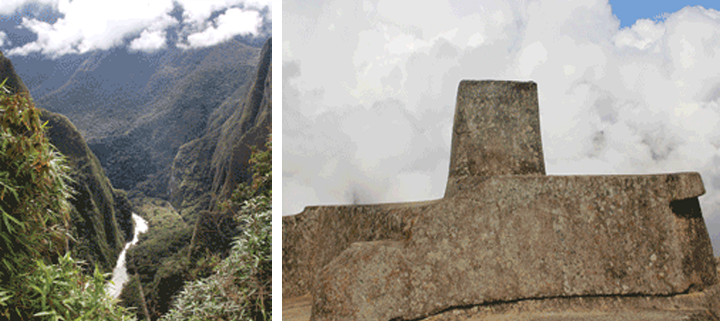
the Urubamba
River down below and the Intihuatana
up in the clouds
